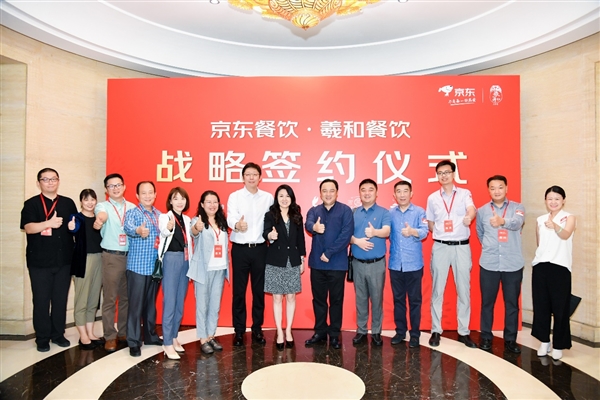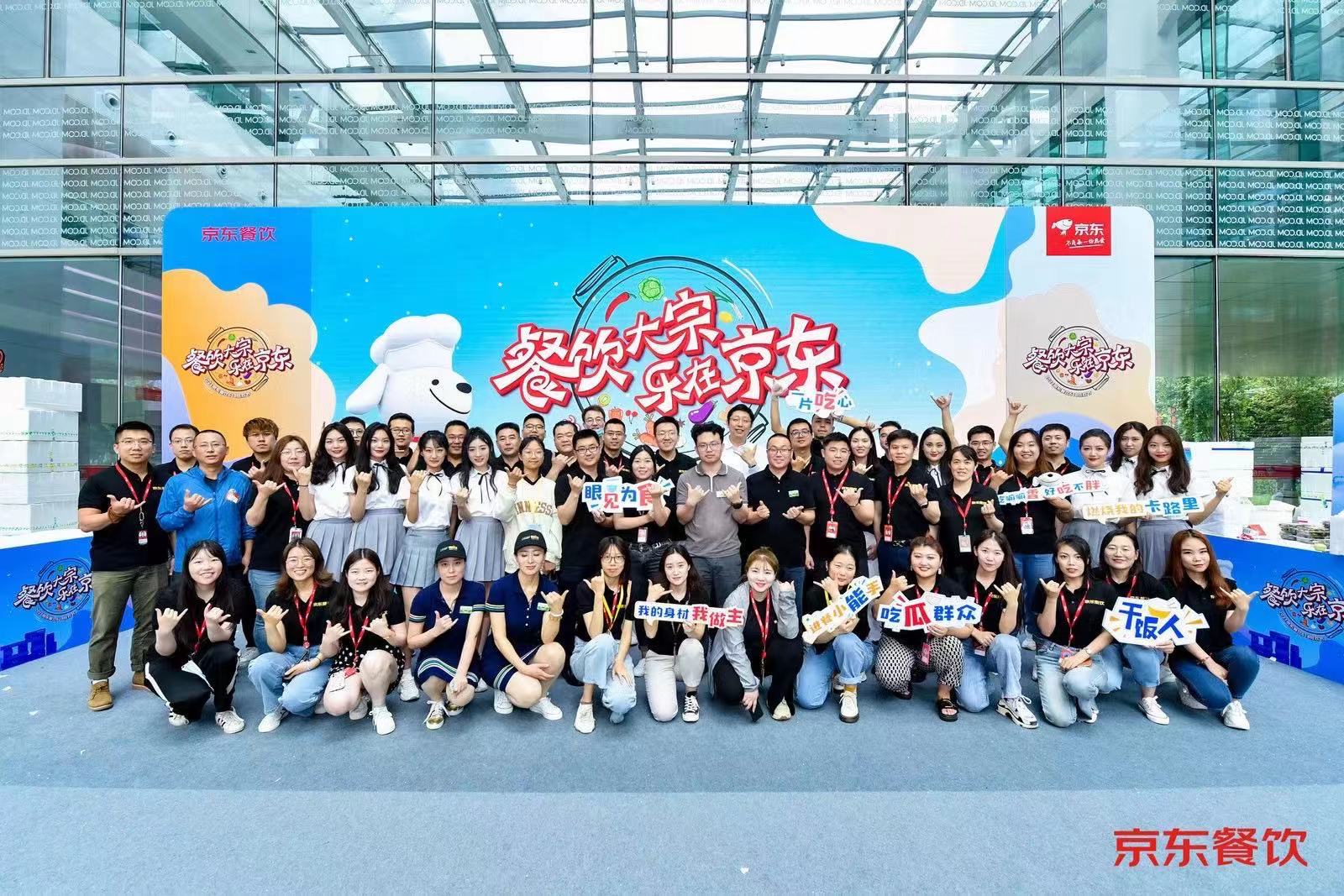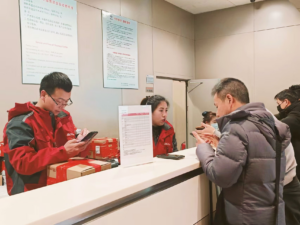Jul 9, 2021|
JD Catering: Reshaping Restaurant Supply Chain in China from Farm to Table
by Vivian Yang
Roast duck is the food of Beijing. One popular chain restaurant that specializes in Beijing cuisine, “Juqi,” which means “upright and loyal to friends” in the local dialect, is very picky in selecting its duck ingredients.
Juqi only uses stuffed ducks that have been fed between 38 to 42 days, and weigh about 3 kilograms. In order to maintain the birds’ shape and prevent fat loss, the fresh meat from the farm needs to be packaged with anti-collision materials and cold-chain delivered to Juqi’s more than 20 locations in Beijing.
These requirements present a big burden for the restaurant, while also present a great opportunity for JD Catering. Leveraging JD’s comprehensive e-commerce platform and logistics advantages, JD Catering is now providing Juqi with not only duck supply fulfillment, but also a one-stop supply chain solution for the restaurant that covers product supplies, warehousing and delivery, food certification, catering cooperation and even food R&D.
“Now, we only need to attend to the kitchen work, and JD handles the rest,” said Tong Han, the owner of Juqi. “That leaves us with fewer things to worry about.”

JD provides one-stop supply chain service for Juqi’s duck supply
The Boss’ Project
According to Jun Ma, general manager of JD Catering, a middle-sized Chinese restaurant routinely stocks over 800 types of products. It is not uncommon for a restaurant to handle more than 100 suppliers at one time. The restaurant’s procurement managers and accountants would normally start their days by jolting between tens of suppliers. Given their respective “sphere of influence,” the products offered by these suppliers are often limited to certain categories, and restaurants frequently elbow each other to fight for businesses.
 Jun Ma, general manager of JD Catering
Jun Ma, general manager of JD Catering
On the contrary, JD’s open e-commerce platform offers restaurants infinite product choices and suppliers in a fast-expanding pool, and lets buyers make free online comparisons between suppliers in order to reach the best procurement decisions.
As an all-category shopping platform, JD does not only offer food ingredients (including fresh produce and more), drinks, and kitchenware, but also all kinds of supplies needed for a food service provider, ranging from napkins and other cleaning products, furnishing and decoration materials, to many digital products used for restaurant operations, etc.
Because of JD’s strong first-party sales model, which enables strong purchasing power, the platform has the advantage to bargain for highly competitive prices for its restaurant clients. “Someone might sell a specific product cheaper than you, but as a whole, JD Catering’s one-stop solution is unparalleled in trouble-shooting many pain points for a catering enterprise,” Ma explained.
“We talk directly to the boss who cares the most about the cost and operating efficiency of a restaurant’s supply chain and makes the final say for a transformation,” Ma said, emphasizing that such disruptive supply change can only be driven from the top level. Ma noted that since the outbreak of COVID-19, he could feel restaurant owners understandably have an increasingly strong need for cost control.
Such transformation is especially helpful for chain restaurants that plan to expand geographically. Ma elaborated that if a restaurant’s supply center is based in Beijing, it might be okay to deliver goods for its outlets in the neighboring areas like Tianjin and Hebei province, but if the restaurant plans to open more outlets in Shanghai or other southern areas of China, it must have extra supply centers.
JD’s nationwide logistics fulfillment capabilities provide ready infrastructure for these chain brands. Xihe food group is a good case in point. This famous chain food service brand featuring exquisite Chinese dishes now has more than 50 restaurants in 15 cities across China, including Beijing, Shanghai, Hong Kong, Shenzhen, Wuhan and more. By collaborating with JD, all Xihe outlets will have a streamlined connection with suppliers and enjoy a standardized one-stop procurement service, according to Jun Zhang, chairman of Xihe food group.
Zhang admitted that Xihe previously lagged behind due to traditional thinking regarding its offline restaurant business. “When we learned JD’s concept, we realized that our previous supplier model was doomed in the market competition,” Zhang said. “There was no doubt about it, it was just a matter of time.”

Agreement signing ceremony between JD Catering and Xihe food group
Quality Control
Food safety is a restaurant’s lifeline. Han of Juqi noted that the industry is slow to change, and many restaurants these days still get their daily supplies from middlemen who resell fresh produce from wholesales markets. If any one of these suppliers’ food has a quality problem, the restaurant has to bear the brunt and take the blame.
To build a trustworthy and traceable food trading platform, JD Catering has put a lot of effort into supplier sourcing and management of its system. A series of measures are in place, including strict quality and criteria checks before and during cooperation with the suppliers, constant flight inspections, third-party tests, packaging compliance requirements, multiple taskforces on quality improvement projects and more.
JD Catering provides farm-to-table quality control service
It is also notable that JD Catering is the first Chinese e-commerce entity to acquire both EU-based certifications under the Global Food Safety Initiative: The British Retail Consortium’s Global Standard for Agents & Broker (BRC A&B) and the International Food Safety (IFS) Broker. In the past two consecutive years, JD Catering has earned the AA certification of BRC A&B, which is the highest possible rating for a BRC planned audit—and in November 2020, the company was certified as a Higher Level of International Food Safety (IFS) Broker. The two certifications have bolstered JD Catering in winning multiple biddings to serve catering enterprise clients from home and abroad.
Furthermore, JD has taken a step further to move up in the agri-food supply chain by building its own vegetable supply and sorting center. In June 2021, JD opened its vegetable sorting center in Shouguang city of Shandong province, which is China’s largest vegetable distribution center, known as “the hometown of vegetables.” A main function of the center is to classify newly harvested vegetables against specific quality criteria such as origin, weight, size, appearance and so forth, ensuring the supplies are already checked and picked from the source, and standardized to meet different market demands.
“The quality of raw food materials is a decisive factor to the success of the final dishes,” said Han. Take cucumber varieties as an example. Some types are good for cold salad, and some are suitable for stir-fry dishes. Through JD’s sources and platform, restaurants may access a vast variety of quality-controlled vegetables from production zones across the country, which helps each restaurant maintain a stable presentation of their food offerings.
The freshness of the food is also guaranteed to reach the dining table, thanks to JD’s proprietary cold-chain logistics service. JD is China’s first company to create an integrated warehousing and delivery solution tailored to its clients from the food service industry. To date, JD Catering’s logistics network has covered seven main regions in China, with seven hub warehouses located in Beijing, Shanghai, Guangzhou, Chengdu, Wuhan, Shenyang and Xi’an that radiate to their surrounding areas. All these cold-chain warehouses have achieved the BRC’s Storage and Distribution global standards as well.
Digitalized Supply Chain
According to data from China’s Ministry of Commerce, about 70% of agricultural products in China today are distributed through wholesale markets. The great majority of these markets are operated in a traditional mode, with great potential to be transformed by new technologies.
Coupling with the sorting center in Shouguang is a digitalized supply chain management system that JD developed for agri-food. The system enables JD to have all-round visibility as regards to the supply and demand on the market, as well as the whole process of vegetable production, storage, classification, distribution transportation and sales information.

JD’s digitalized warehouse
“For people in big cities who buy vegetables in supermarkets, they will be blown away to see the cheap price of these vegetables from the distribution center,” Ma said with excitement while showing the everyday vegetable price list of Shouguang on his phone. He believed that by bridging these information gaps with digital systems, the cost and operating efficiency of food supplies will be significantly improved.
On the demand side, more and more restaurants have started to apply tech-driven solutions to manage their daily operations. For instance, JD’s smart replenishment system can forecast the restaurant’s stock level and make automatic orders to ensure adequate goods supplies. Algorithms help free restaurant staff from repetitive work and avoid errors they might make after a tiring day of work. For example, forgetting to order one ingredient at some point might result in a whole dish being out of stock, or hitting one extra zero on the amount might lead to a crammed warehouse.
Additionally, Ma pointed out that JD’s digitalized capabilities have a greater role to play in many aspects for restaurants, such as choosing new outlet locations, allocating resources, marketing, managing membership and more. These services are all modularized by JD to better serve their clients according to their actual and customized needs.
Upgrading the “Kitchen”
As a new business incubated within JD Retail since March 2018, JD Catering’s team has done tremendous work inside the company to create the magic of the system. JD’s three main business groups, JD Retail, JD Logistics and JD Technology, have all been involved and adapted their systems to the development of JD Catering.
For instance, as a primary retail platform, the weight unit of food sold on JD.com is usually measured by 500 grams. But for a wholesale business, Ma’s team needs to adjust the system’s measurement settings into kilograms or even tons.
By leveraging both JD’s “to B” and “to C” e-commerce models, JD Catering continues to extend its service value in innovative ways, such as supporting central kitchens of food brands on standardization and package diversification, so as to use differentiated offerings to serve restaurant users and individual customers at the same time, further expanding brands’ reach and revenues.
JD Catering’s team
Moreover, to provide financing support to its partners along the food service supply chain as part of JD Catering’s services, the team has spent a lot of time with JD Finance’s team to connect JD’s underlying system.
“Supply chain is the foundation of catering enterprises. Those who master the supply chain will surely win the market,” said Li Wu, chairman of the supervisory board of the World Federation of Chinese Catering Industry during a seminar with leading Chinese restaurant brands on the topic of one-stop supply chain solutions for catering enterprises. “To stay ahead of the market competition, catering enterprises should make full use of ready capabilities on the open market, such as mature supply chain, capital, information and more to obtain overall market scale advantage.”
At the agreement signing ceremony with Juqi, Carol Fung, president of JD FMCG omni-channel and Ma’s supervisor, echoed Wu’s point that JD Catering is committed to helping more and more catering enterprises to achieve operating standardization and scalable development.
“We aim to build supply chain solutions that are in line with each restaurant’s own development need, and we also hope to foster more and more excellent supply chain professionals down the road who can create new supply chain models and scenarios for the whole industry,” Fung added.






 This Harbin tourism boom has also spurred a surge in sales of winter apparel. JD.com’s data indicates a rapid growth in the sales of warm clothing items such as down jackets, snow boots, and thermal underwear between January 1st and 7th. The sales growth is especially pronounced in southern provinces and cities such as Jiangsu, Zhejiang, Guangdong, Sichuan, and Shanghai. Notably, tall snow boots registered a 206% year-on-year increase in transactions, while padded cotton caps and thickened long down jackets soared by 158% and 134%, respectively. Beyond clothing, travel gear has also seen a considerable uptick, with a 98% year-on-year growth in transactions for large suitcases and travel backpacks in these southern regions.
This Harbin tourism boom has also spurred a surge in sales of winter apparel. JD.com’s data indicates a rapid growth in the sales of warm clothing items such as down jackets, snow boots, and thermal underwear between January 1st and 7th. The sales growth is especially pronounced in southern provinces and cities such as Jiangsu, Zhejiang, Guangdong, Sichuan, and Shanghai. Notably, tall snow boots registered a 206% year-on-year increase in transactions, while padded cotton caps and thickened long down jackets soared by 158% and 134%, respectively. Beyond clothing, travel gear has also seen a considerable uptick, with a 98% year-on-year growth in transactions for large suitcases and travel backpacks in these southern regions. Chilean Ambassador Receives Award at JD Headquarters
Chilean Ambassador Receives Award at JD Headquarters



